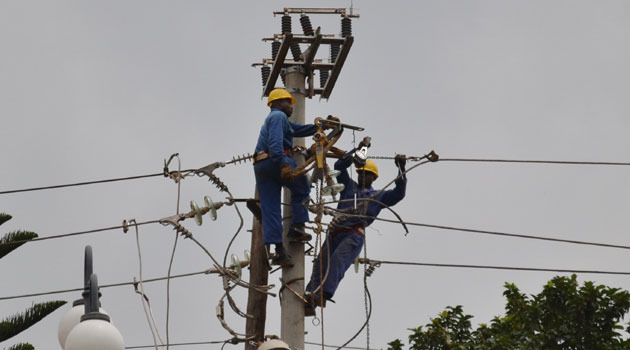NAIROBI, Kenya, Mar 30 – Electricity consumption in Kenya grew by 278.75 gigawatt hours (GWh) to 5,484.54 GWh in the first half of the financial year (FY) 2024/2025 compared to a similar period in the preceding FY, boosted by increased demand from manufacturing, among other sectors.
Click here to connect with us on WhatsApp The biannual Energy & Petroleum Statistics report by the Energy and Petroleum Regulatory Authority (EPRA) shows that power demand in the country stood at 5,205.79 GWh in the half year of the 2023/2024 FY. The Nairobi region retained its position as the leading consumer, utilizing 2,415.

44 GWh, an improvement from 2,293.95 GWh in the same period last year. Nairobi accounted for 44.
04 percent of the national electricity consumption, driven by the high concentration of industrial, SME, financial, service, and real estate activities in the area. The Coast region ranked second in electricity consumption, utilizing 988.21 GWh, up from 930.
05 GWh in the previous financial year, constituting 18.02 percent of the total energy consumed. Similarly, the Rift Valley region recorded an increase from 705.
48 GWh to 759.42 GWh, representing 13.85 percent of the national consumption.
North-Eastern Kenya, which includes Garissa, Wajir, Mandera, Marsabit, Kitui, Thika, and parts of Machakos, consumed 586.09 GWh, accounting for 10.69 percent of the total.
The Mt. Kenya region followed, utilizing 353.90 GWh (6.
45 percent. The West Kenya and South Nyanza regions recorded the lowest consumption at 280.78 GWh (5.
12 percent) and 110.69 GWh (1.84 percent), respectively.
“The steady increase in energy consumption reflects Kenya’s ongoing economic growth and industrial expansion, particularly in urban and commercial hubs,” the EPRA report stated. The demand for Liquefied Petroleum Gas (LPG) also surged by 13.38 percent to 219,416 metric tonnes, attributed to government-led initiatives promoting clean cooking and the expansion of the LPG sector.
Meanwhile, electricity imports saw a sharp rise of 79.41 percent, from 419.13 GWh in the previous financial year to 751.
95 GWh in the review period. The increase was largely due to the full commercial operation of Kenya’s power import contract with Ethiopia Electricity Power (EEP) in December 2023. Kenya imports 200 MW from EEP and has energy exchange agreements with Uganda Electricity Transmission Company Limited (UETCL) and Tanzania Electricity Supply Company Limited (TANESCO), allowing access to competitively priced renewable energy.
The highest electricity imports were recorded in November at 134.18 GWh, while July saw the lowest at 106.11 GWh.
The report highlights Kenya’s ongoing efforts to enhance energy reliability and sustainability through regional collaborations and investments in renewable energy infrastructure..
Business

Kenya’s electricity consumption up 278.75 GWh on demand

NAIROBI, Kenya, Mar 30 – Electricity consumption in Kenya grew by 278.75 gigawatt hours (GWh) to 5,484.54 GWh in the first half of the financial year (FY) 2024/2025 compared to a similar period in the preceding FY, boosted by increased demand from manufacturing, among other sectors. The biannual Energy & Petroleum Statistics report by the [...]















